Human Computer Integration Lab
Computer Science Department, University of Chicago
Essays (long-form writings from our lab)
(Back to all essays)Essay #2: Our Lab at CHI 2025 by Prof. Pedro Lopes
May 5th, 2025
This April, our lab traveled to Yokohama, Japan to take part in ACM CHI 2025—the premier international conference on Human Factors in Computing Systems. Our presence at CHI spanned across 4 CHI papers, 1 TOCHI journal presentation, 1 course, 4 demos, and a very special ACM SIGCHI award for Jasmine Lu. Below is a reflection on our time at CHI, what we presented, and what made this conference special for us.
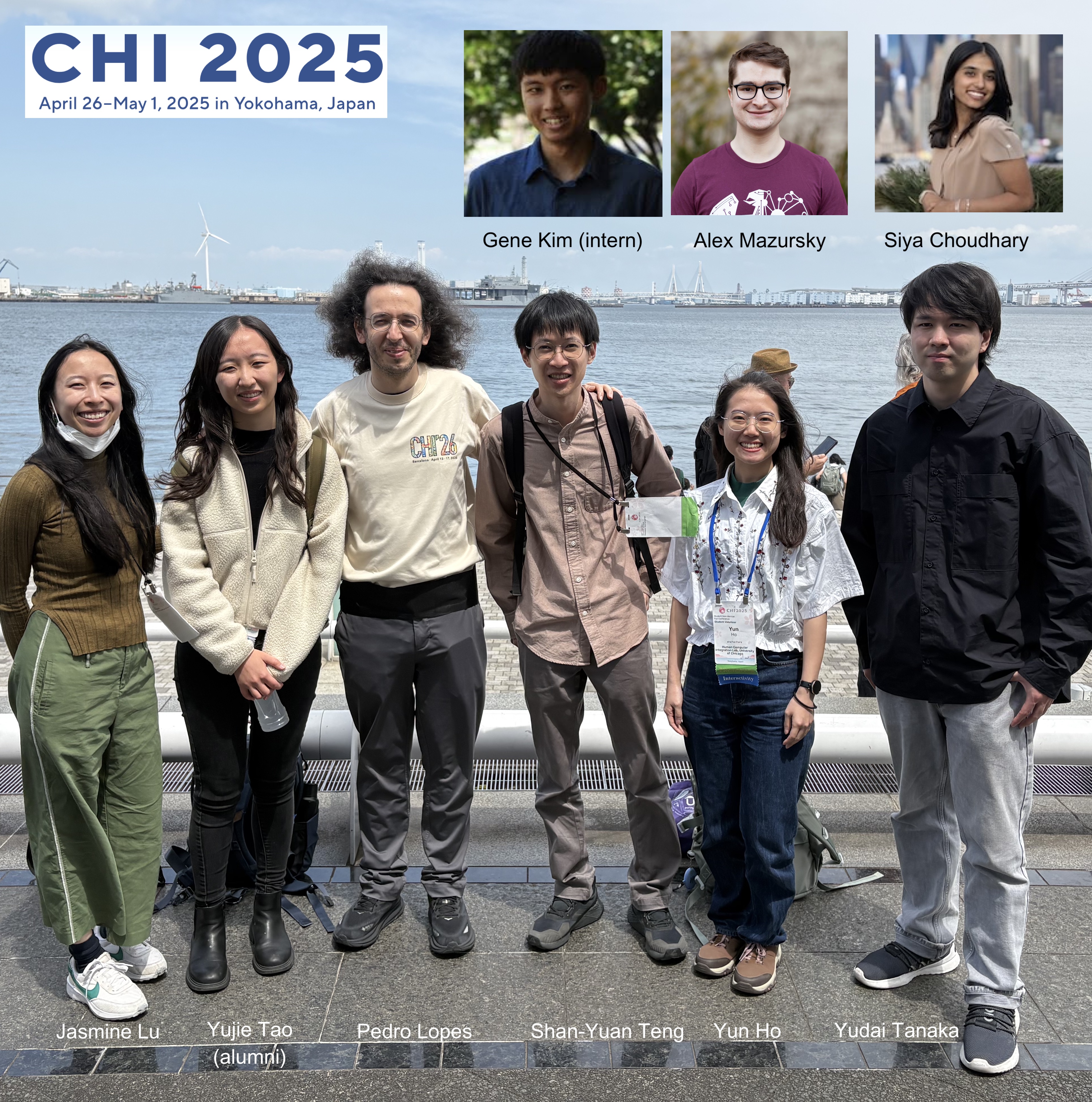
TLDR: video 5-min recap
Our lab published four new interactive systems at ACM CHI 2025, you can watch all our papers in action in this 5-minute recap video (shot in a single take).
Watch a 5-minute recap video of all our CHI 2025 demos (Curious about this video? Read this1).
Our paper presentations
Adaptive Electrical Muscle Stimulation Improves Muscle Memory
Authors: Siya Choudhary*, Romain Nith*, Yun Ho*, Jas Brooks, Mithil Guruvugari, Pedro Lopes. In Proc. CHI'25. * authors contributed equally. (📄 PDF download of the paper or 🖥️ Learn more about this project)
Key contribution: Electrical muscle stimulation (EMS) can assist in learning motor skills. However, existing EMS systems provide static demonstration—actuating the correct movements, regardless of the user’s learning progress. We proposed a novel adaptive-EMS that changes its guidance strategy based on the participant’s performance. We found that adaptive-EMS improved learning outcomes (recall) compared to traditional EMS—leading to improved “muscle memory”!
Conference story: This was the first ever conference talk for both Siya and Yun—and what a debut! Even more remarkable: Siya led this paper as a high school student (yes, you read that right!). She’s now an undergrad in CS at UIUC. Yun, a first-year PhD student in our lab, co-presented and also performed a live demo on stage, which you can watch below! Our special thanks goes out to Romain Nith (PhD in our lab) who stayed in Chicago taking care of our lab and was deeply instrumental in this project, not only advising Siya and leading this project as a first-author, but also in creating part of the system behind the live demonstration that we presented at CHI (more on this later!).
Watch Yun and Siya giving the Adaptive EMS live talk at CHI 2025, including a live demo!
Seeing with the Hands: A Sensory Substitution That Supports Manual Interactions
Authors: Shan-Yuan Teng*, Gene S-H Kim*, Xuanyou (Zed) Liu*, Pedro Lopes. In Proc. CHI'25 (* authors contributed equally). (📄 Download the paper as PDF 🖥️ Learn more about this project)
Key contribution: Sensory-substitution enables perceiving objects by translating one modality (e.g., vision) into another (e.g., tactile). Despite much exploration in neuroscience and HCI, the camera’s location remains largely unexplored: placed at the eyes’ perspective. We propose that seeing & feeling information from the hands’ perspective enhances flexibility & expressivity of sensory-substitution to support manual interactions. We engineered a haptic-display that renders tactile images from a wrist-mounted camera, allowing to feel objects at a distance. We conducted a study with sighted/Blind-or-Low-Vision participants and found that they valued the hands’ perspective as it enables ergonomic interactions.
Conference story: This paper was a wonderful collaboration, co-led by Shan-Yuan (our PhD student), Gene (our summer intern), and Zed (our summer intern). Gene, who is blind, was the primary designer of the system—drawing from his own lived experiences to design and study this novel device. This paper is especially close to our hearts. Each of the lead authors is now embarking on exciting new paths: Zed Liu is a PhD student at Northwestern (working with Karan Ahuja), Gene Kim is a PhD student at MIT EECS (working with Arvind Satyanarayan), and Shan-Yuan is now Assistant Professor at NTU, launching the Dexterous Interaction Lab (link)—congratulations Dr. Teng!
Watch Shan-Yuan giving the Seeing with Hands talk for CHI 2025.
ProtoPCB: Reclaiming Printed Circuit Board E-waste as Prototyping Material
Authors: Jasmine Lu, Sai Rishitha Boddu, Pedro Lopes. In Proc. CHI'25. (📄 Download paper as PDF here 🖥️ Learn more about this project)
Key contribution We propose an interactive tool that enables reusing printed circuit boards (PCB) as prototyping materials to implement new circuits—this extends the utility of PCBs rather than discards them as e-waste. Our tool takes a user’s desired circuit schematic and analyzes its components and connections to find methods of creating the user’s circuit on discarded PCBs (e.g., e-waste, old prototypes)—assisting with exhaustive remixing/matching tasks that a user would not likely perform manually.
Conference story: This is Jasmine Lu’s third system in her PhD on computationally driven recycling. Her line of research is both technically creative and ecologically important. Jasmine will be on the faculty job market soon!
Watch Jasmine giving the ProtoPCB live talk at CHI 2025.
Power-on-Touch: Powering Actuators, Sensors, and Devices during Interaction
Authors: Alex Mazursky, Aryan Gupta, Andre de la Cruz, Pedro Lopes. In Proc. CHI'25. (📄 Download the paper as PDF here or 🖥️ Learn more about this project)
Key contribution:Many devices only require power during interaction (e.g., TV remotes, digital calipers). We leverage this interactive opportunity by inductively transferring energy from the user’s coil to the device’s coil when in close proximity. We engineered receiver-tags and coils, including thin pancake-coils best-suited for wearables and spherical-coils that receive power omnidirectionally. Our technical approach can inspire ubiquitous computing with new ways to scale up the number and diversity of battery-free devices, not just sensors (𝜇Watts) but also actuators (Watts).
Conference story: This was Alex Mazursky’s last paper with us in the lab—he just graduated with his PhD and is now at Apple working on the Haptics Team. Congratulations Dr. Mazursky!
Watch Alex giving the PowerOnTouch talk for CHI 2025.
Unmaking Electronic Waste
Jasmine Lu, Pedro Lopes. In ACM TOCHI 2024 (presented at CHI'25). (📄 Download as PDF here)
Key contribution: We explore the concept of unmaking e-waste: to dismantle existing devices into useful components that can be directly reused to build new devices. We argue that HCI can learn from experts who upcycle e-waste for electronics projects, art, and more. To acquire this knowledge, we interviewed experts who unmake e-waste and synthesized their insights in this journal paper.
Conference story: This paper is part of Jasmine’s broader PhD on computational sustainability. It was published in ACM TOCHI and presented at CHI’25. This work laid the foundation for her later ProtoPCB project!
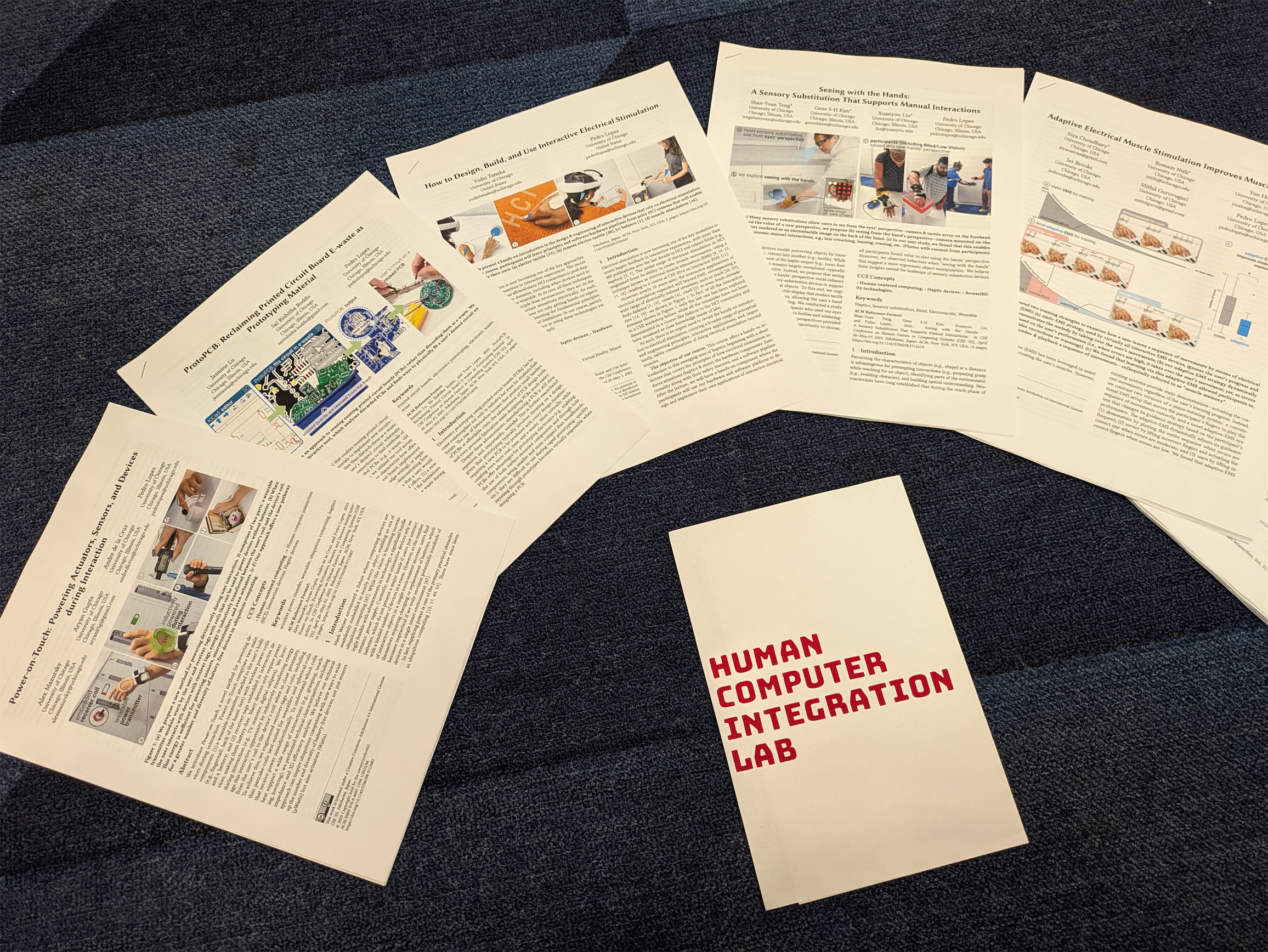
p.s.: Additionally to these papers, our PhD student Jas Brooks (who was a co-author in our Adaptive EMS paper) was also a co-author in a paper “Mid-Air Gestures for Proactive Olfactory Interactions in Virtual Reality” with Junxian Li (more about this paper here—including a presentation video). This was special because it was one of Jas’ last papers in our lab too. Jas is now an Assistant Professor at MIT EECS—congrats Dr. Brooks!
ACM SIGCHI Special Recognition Award
We are absolutely delighted that our PhD student Jasmine Lu received an ACM SIGCHI Special Recognition award at the 2025 SIGCHI Awards Banquet! The award citation reads: “For pioneering research in ecological HCI through novel hardware interfaces and fostering communities around sustainable computing.” Pedro had the honor of presenting the award to Jasmine at the banquet. You can see all awardees, including Paul Dourish, Pattie Maes, and many others, here.

Course on Electrical Stimulation (and a workshop)
Yudai Tanaka and Pedro taught a hands-on course on electrical stimulation at CHI 2025. Participants learned both theory and practice: from safe use of EMS to building their own interactive prototypes. We provided stimulation hardware and a Python API toolkit for experimentation. The course took place on April 29th, and participants got the rare opportunity to test their ideas live on their own bodies under safe supervision.
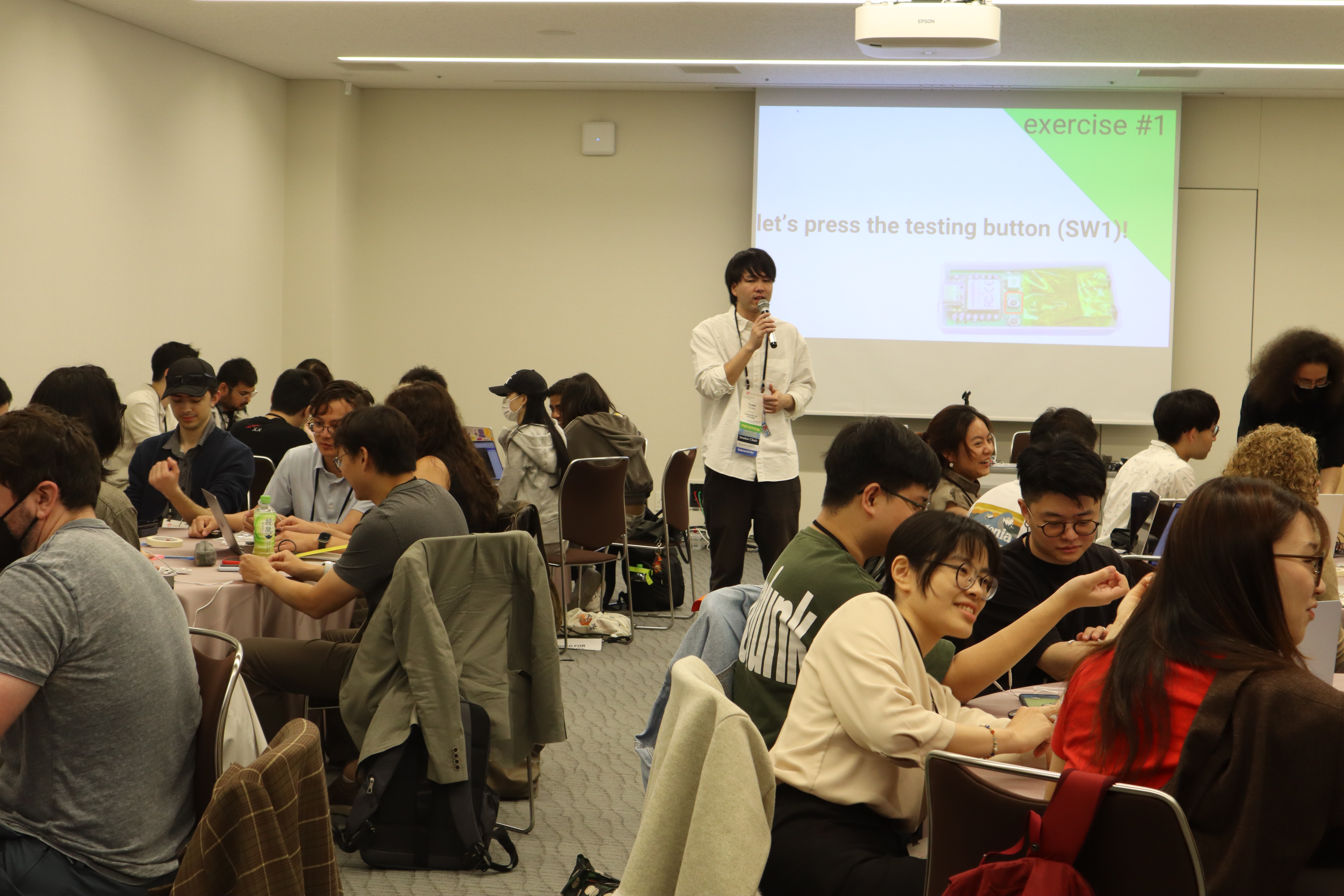
Interested in a stimulation kit? If you’d like to eventually get access to a stimulation toolkit (hardware and software) go to estim.plopes.org and request one! We will do our best to assist you!
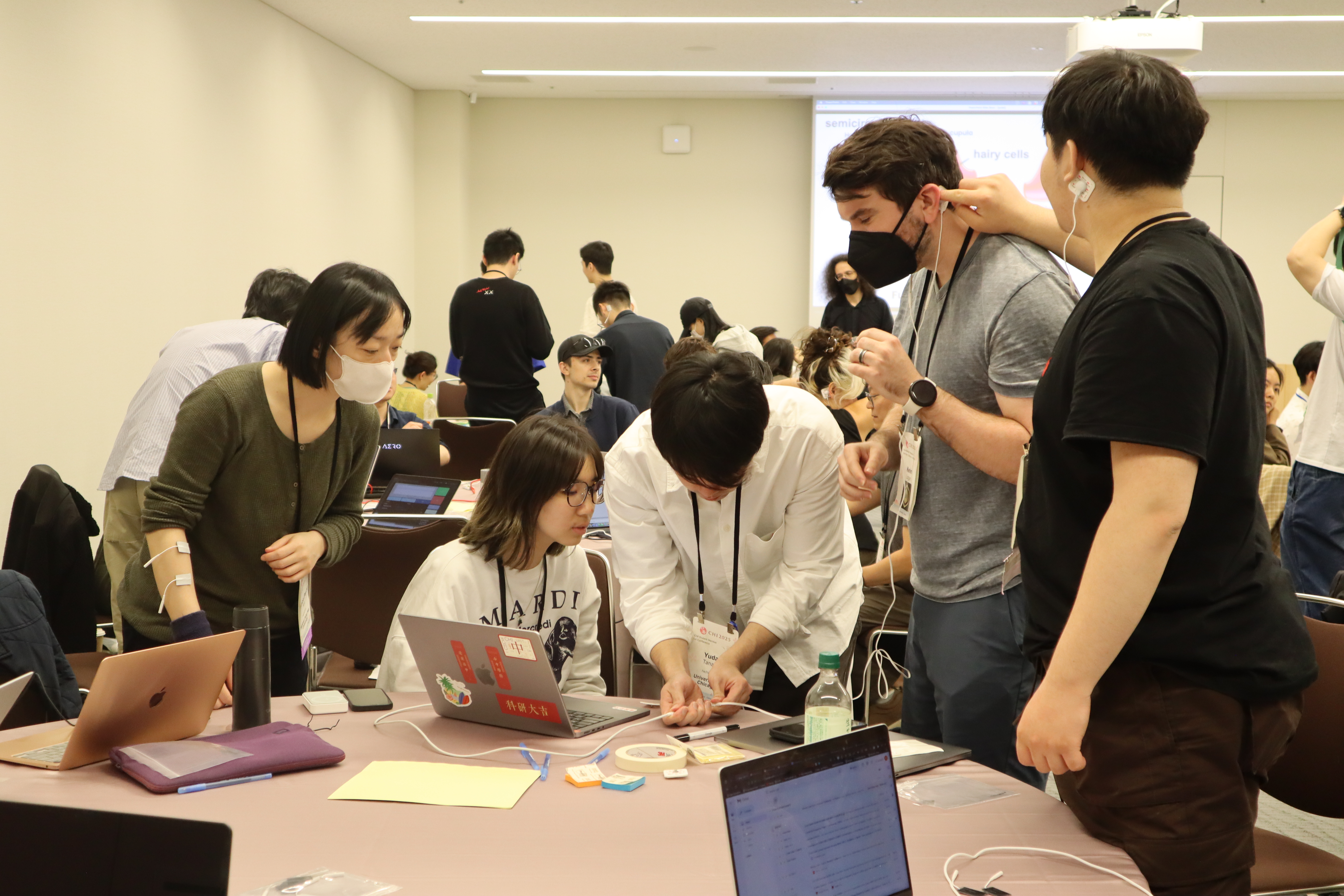
Our electrical stimulation course would not have been possible without the many hours of soldering work by Romain Nith, Shan-Yuan Teng, Jasmine Lu, Lonnie Chien, Lorenzo Kwenda, and Yun Ho. Thank you!
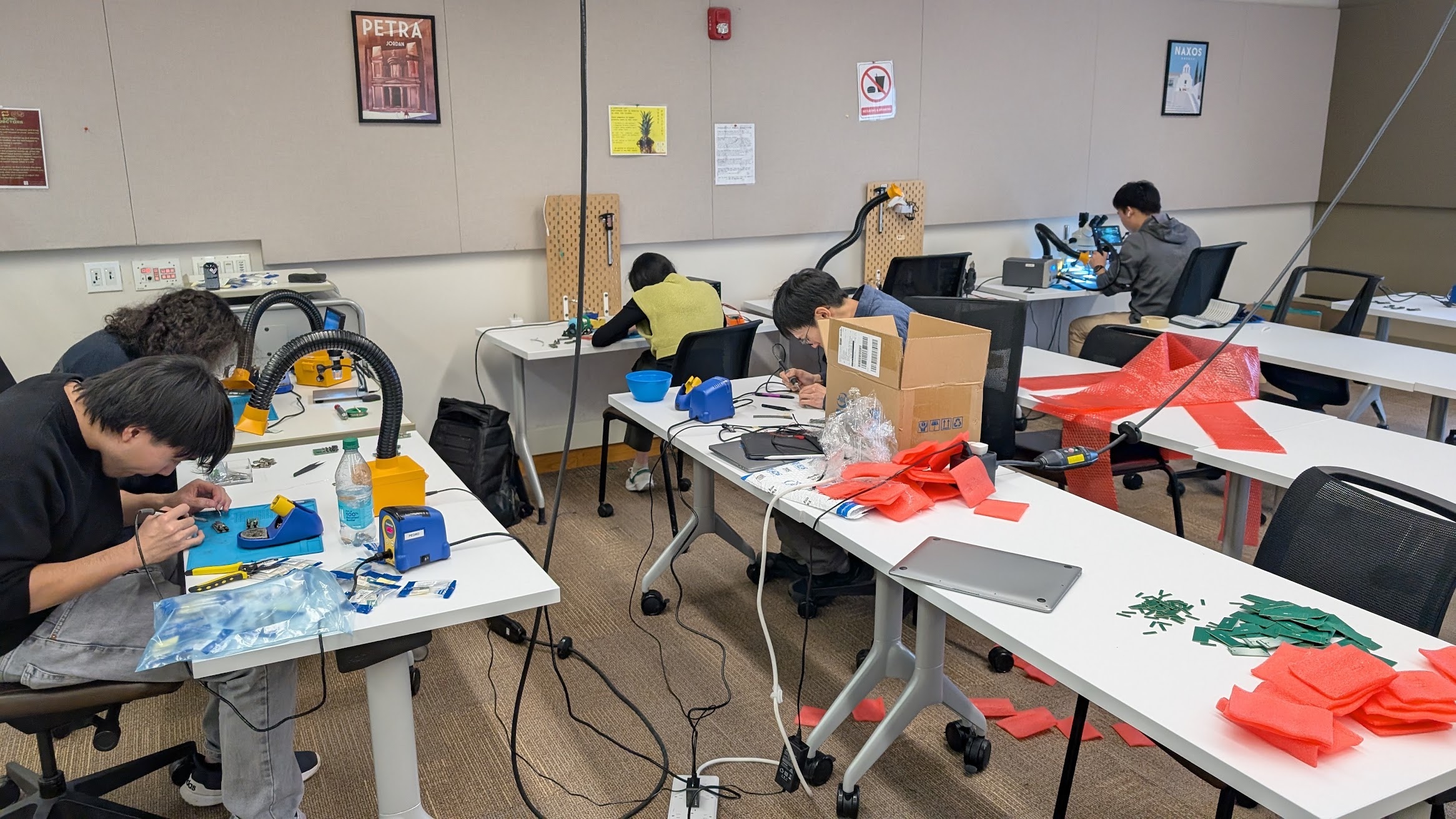
p.s.: One more workshop! Our PhD student Alex Mazursky (the lead author on Power on Touch) organized the “Sensorimotor Devices: Coupling Sensing and Actuation to Augment Bodily Experience” workshop together with Paul Strohmeier, Laia Turmo Vidal, Gabriela Vega, Courtney N. Reed, Easa AliAbbasi, Ana Tajadura-Jiménez, and Jürgen Steimle. You can read more about their lovely workshop here.
Demos
We also presented live demos for each of our four interactive system at the conference demo session (you can watch a live demo of all these four system’s in one go here):
Adaptive Electrical Muscle Stimulation Improves Muscle Memory — Siya Choudhary and Yun Ho lead this live demo with support from Romain Nith!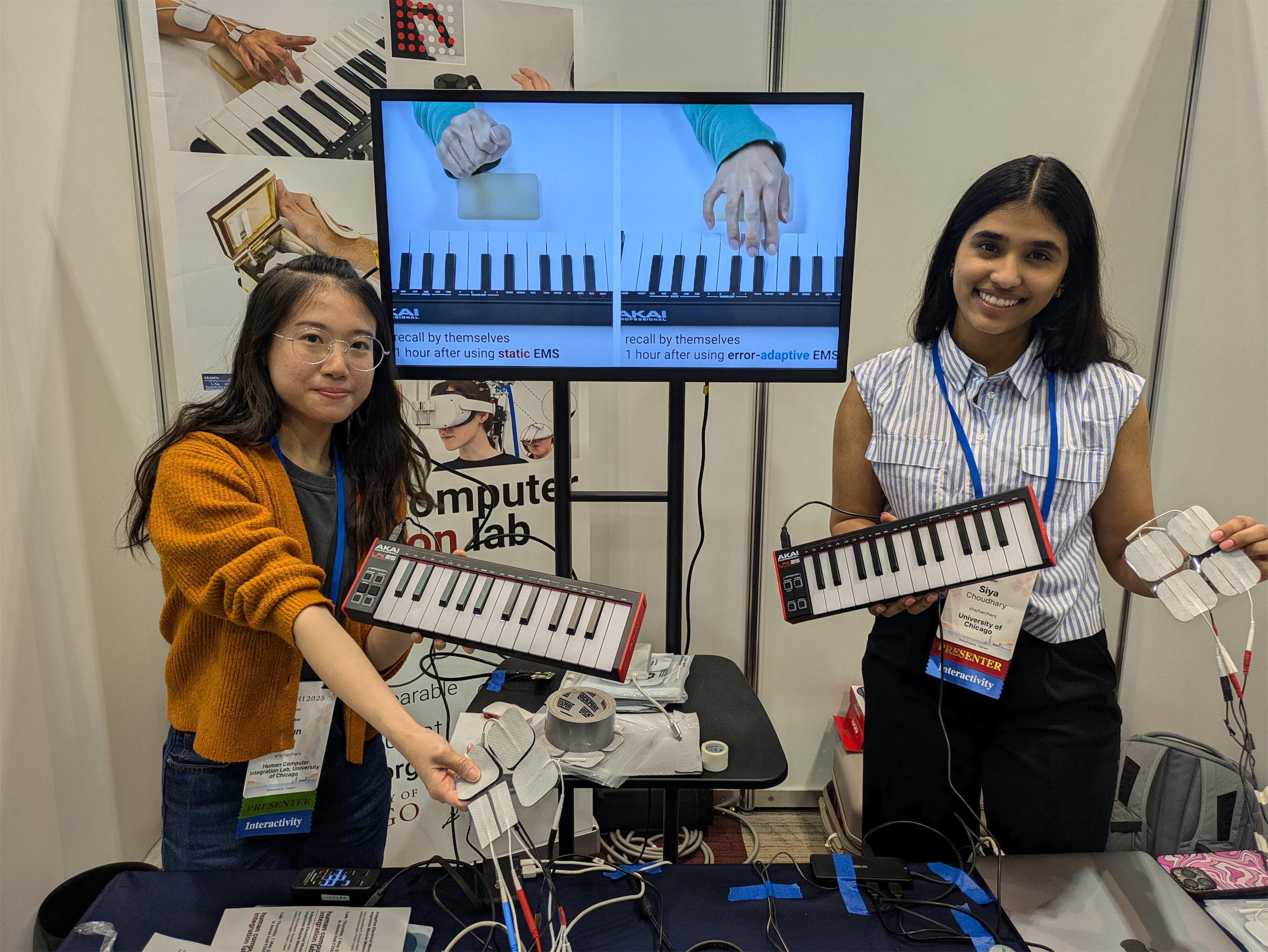
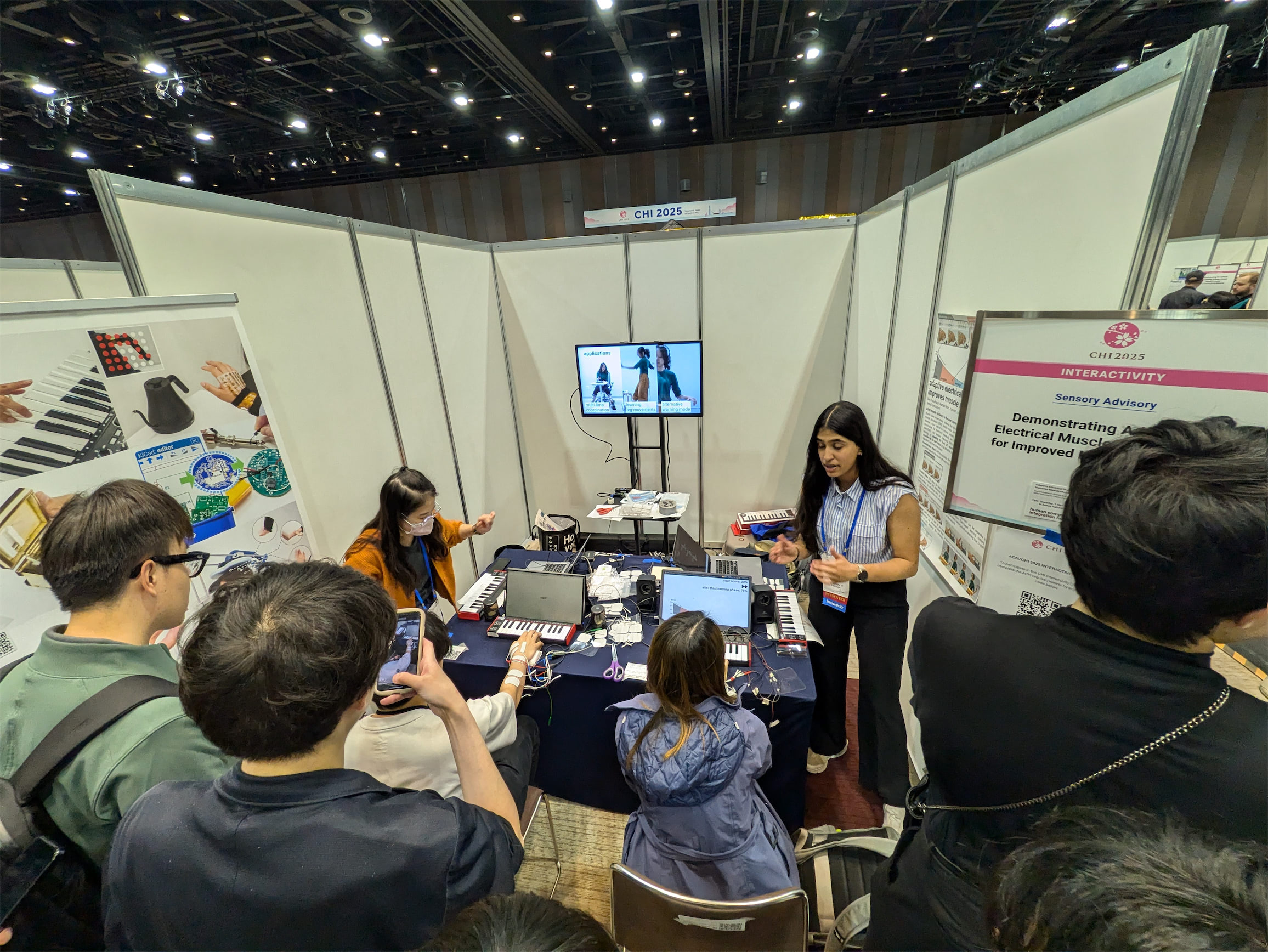
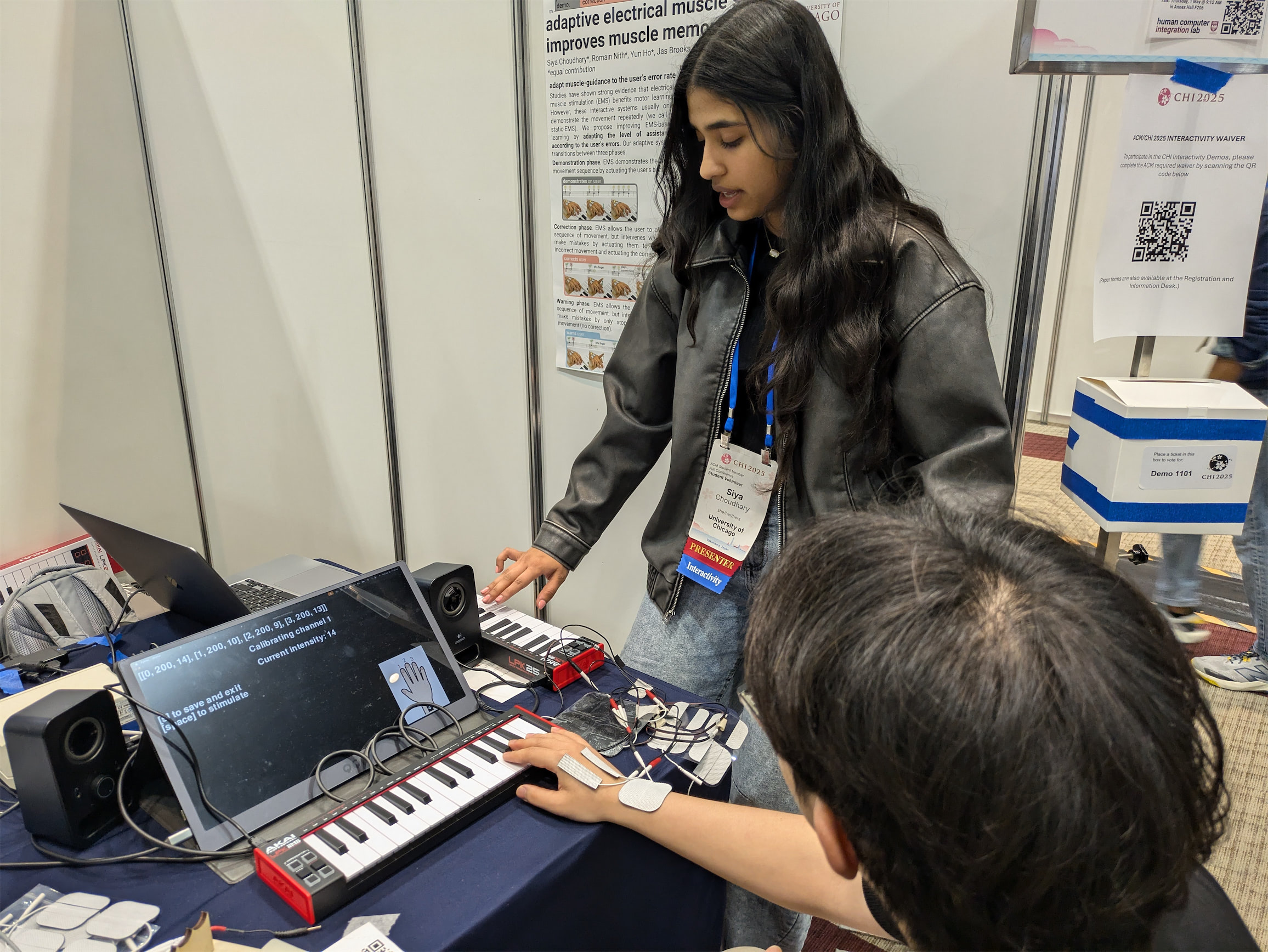
Seeing with the Hands: A Sensory Substitution That Supports Manual Interactions — Shan-Yuan Teng and Gene S-H Kim lead this live demo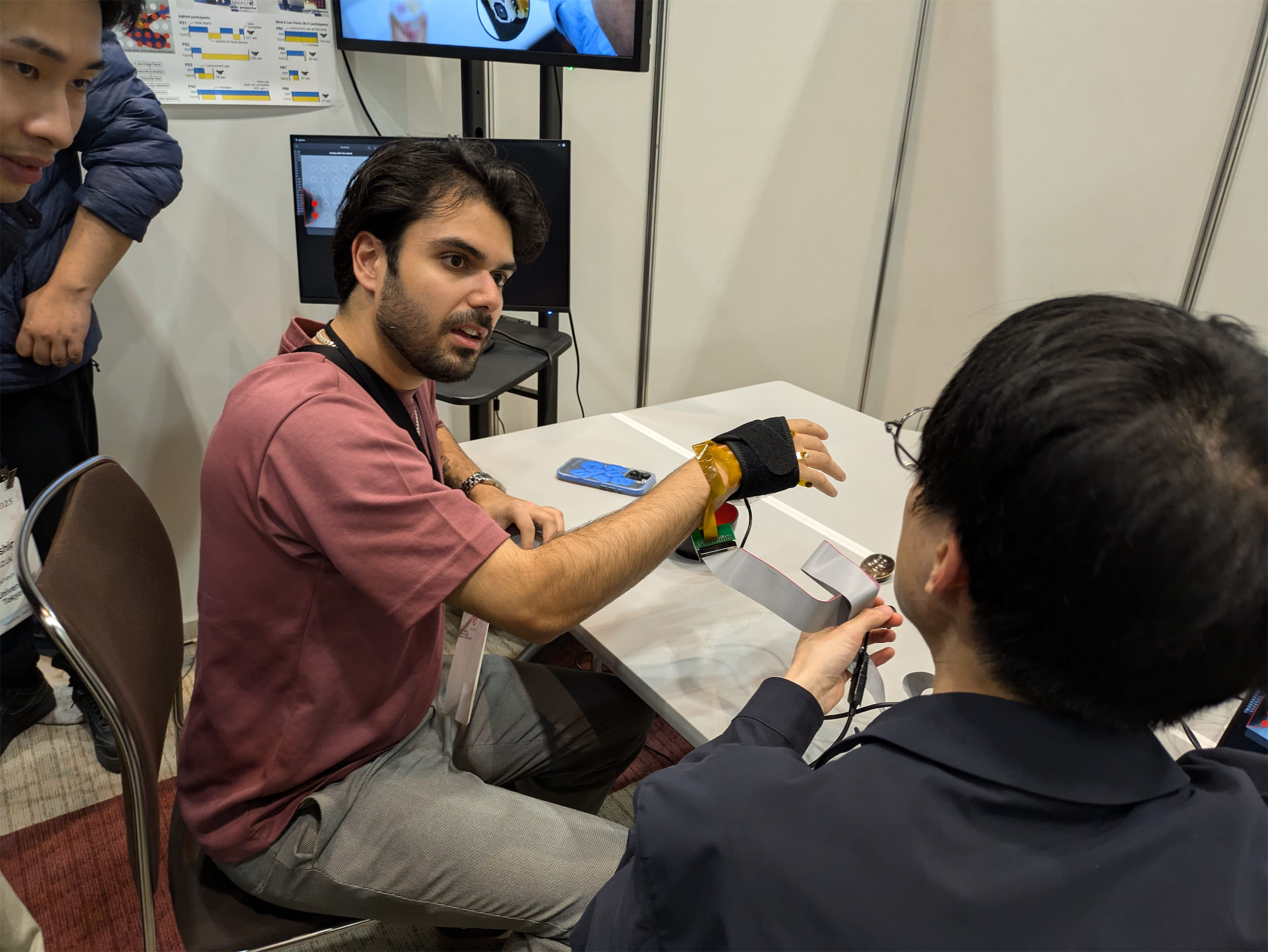
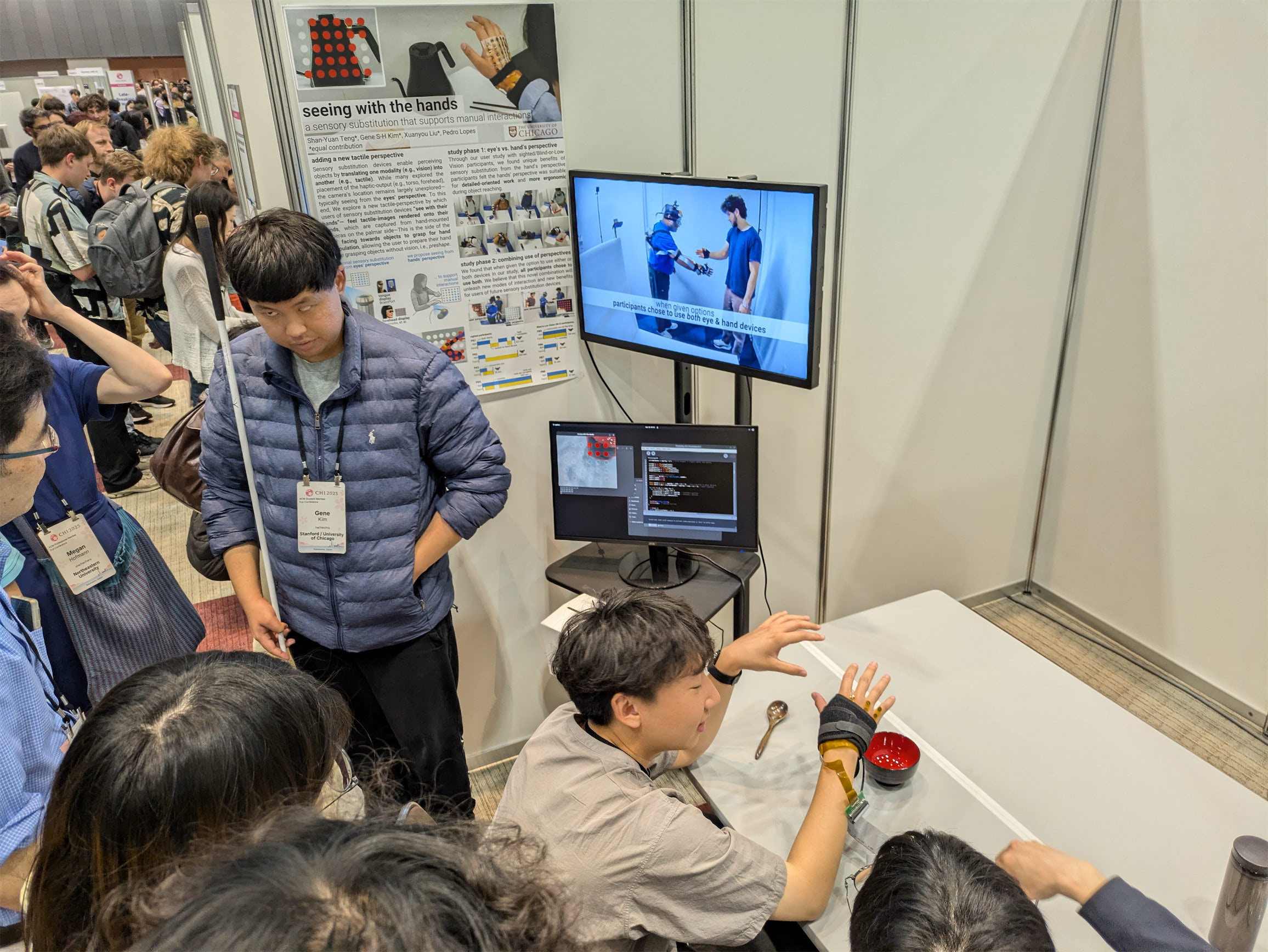
ProtoPCB: Reclaiming Printed Circuit Board E-waste as Prototyping Material — Jasmine Lu lead this live demo 
Power-on-Touch — Alex Mazursky lead this live demo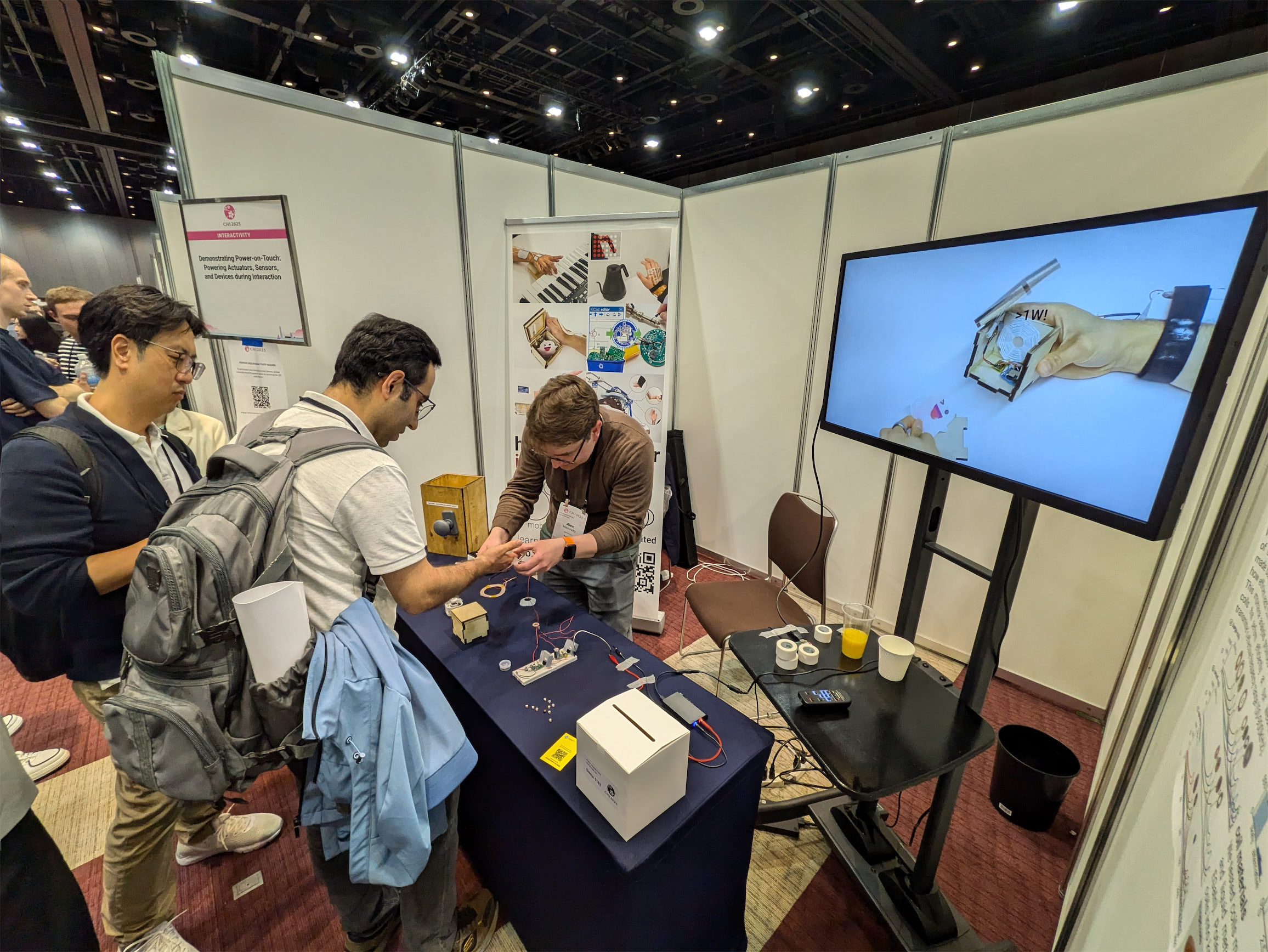
Service
Our lab also contributed in service roles this year. Pedro Lopes served as Late-Breaking Work Chair, helping shepherd the largest number of poster submissions and acceptances in CHI history! (Note that starting next year, this venue will be renamed as “Posters”).
Next CHI—Barcelona
It takes a village to organize a conference of this scale—especially one that broke all attendance records (with over 5500 attendees)! Many thanks to the organizing committee for their hard work. At the end of CHI 2025, Pedro had the chance to step on stage with our CHI 2026 General Chairs (David A. Shamma and Nuria Oliver) and introduce the new program for CHI 2026. We can’t wait to see everyone at CHI 2026 in Barcelona, where Pedro will serve as Technical Program Chair (apropos this, a really big thanks to the 2026 organizing team which spent the days after CHI 2025 working on-site with the CHI steering committee).
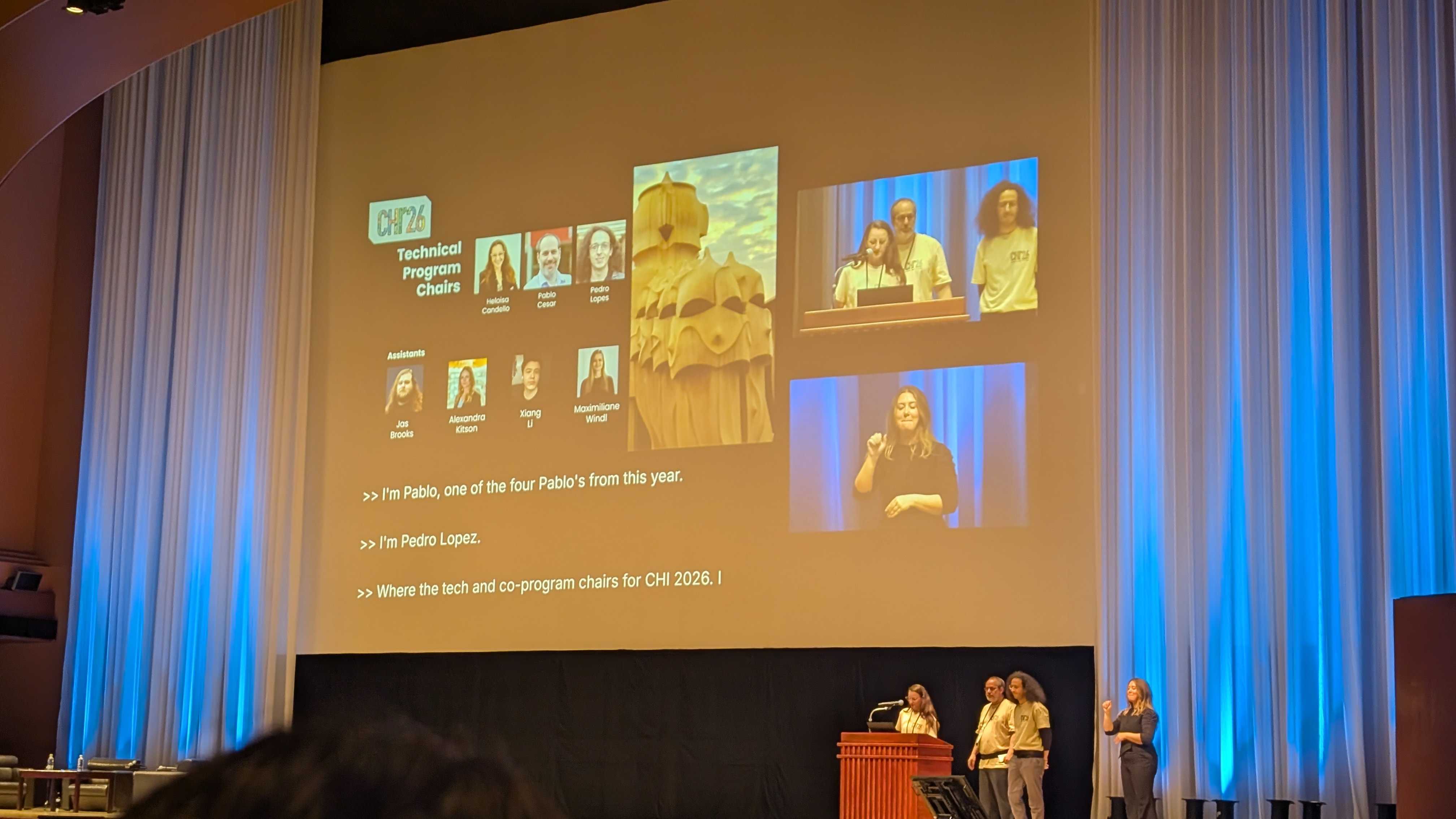
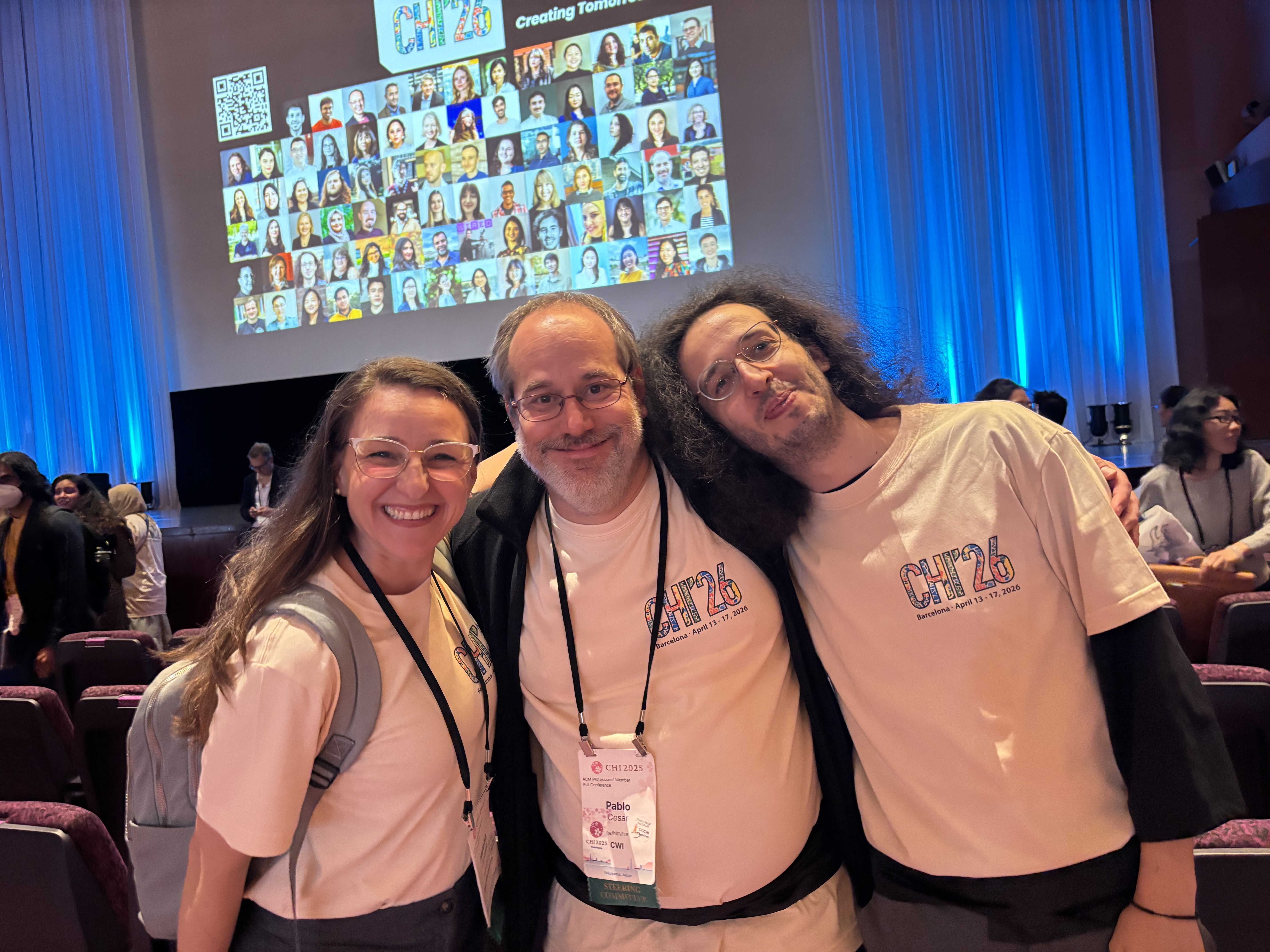
Footnote 1: Video credits & more info for curious people:
1. This video was an experiment in shooting in one take.
2. This video was meant to be 5 minutes, and it was exactly 5 minutes and two seconds.
3. This video was edited entirely on the command line, thanks to ffmpeg.
4. Romain Nith behind the camera on this video, he did a great job. It was our first time using a stabilizer.
5. Everything was improvised, we only knew the sequence of the demos to keep the time minimal as we are putting on/off the wearable devices.